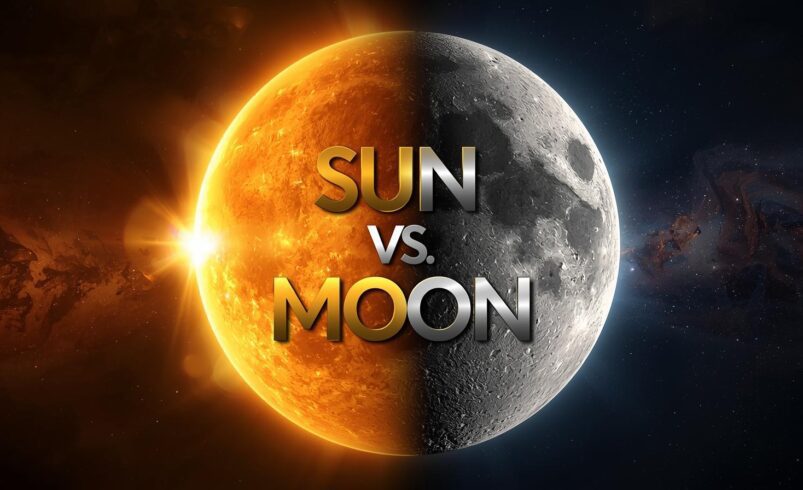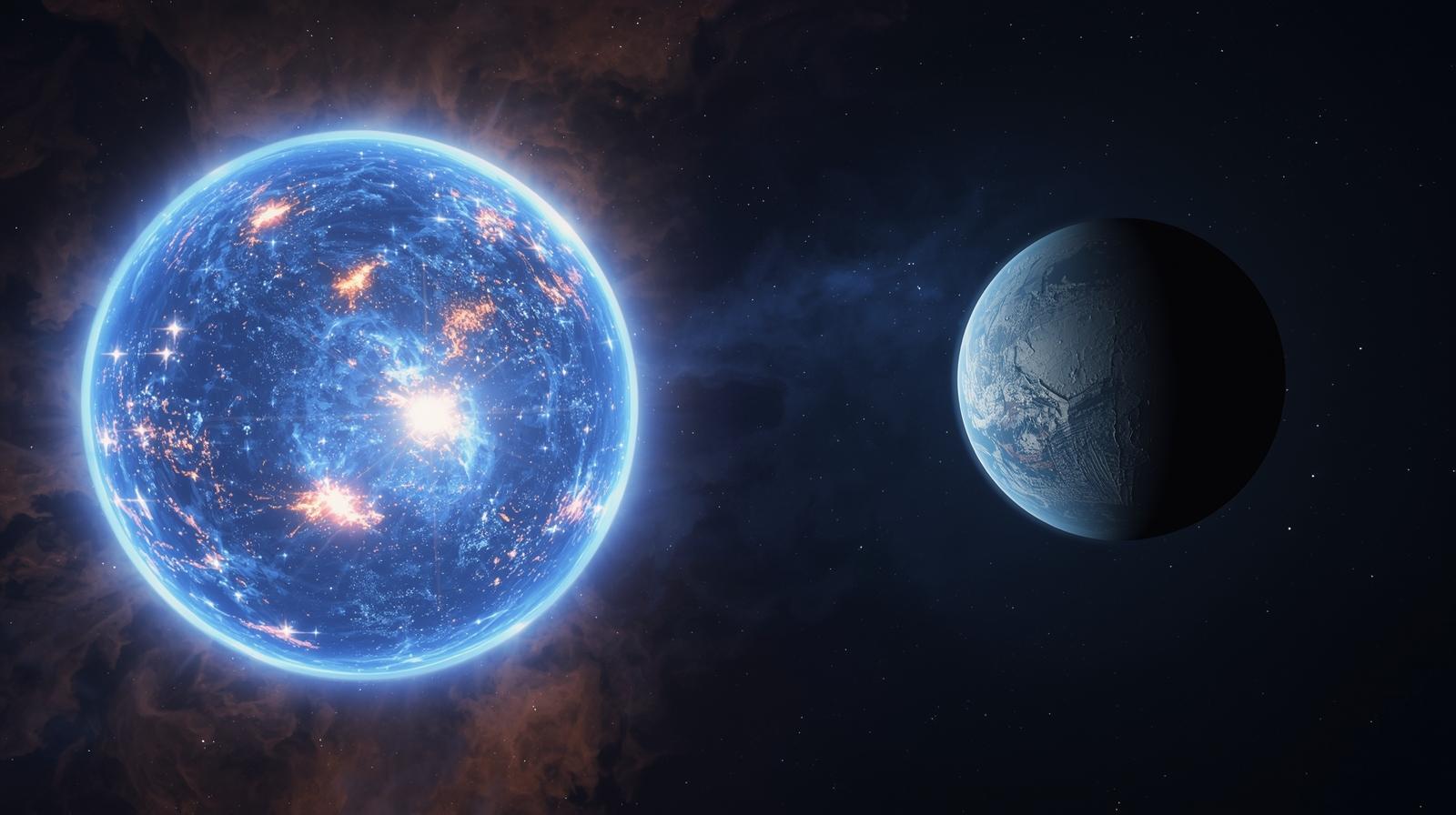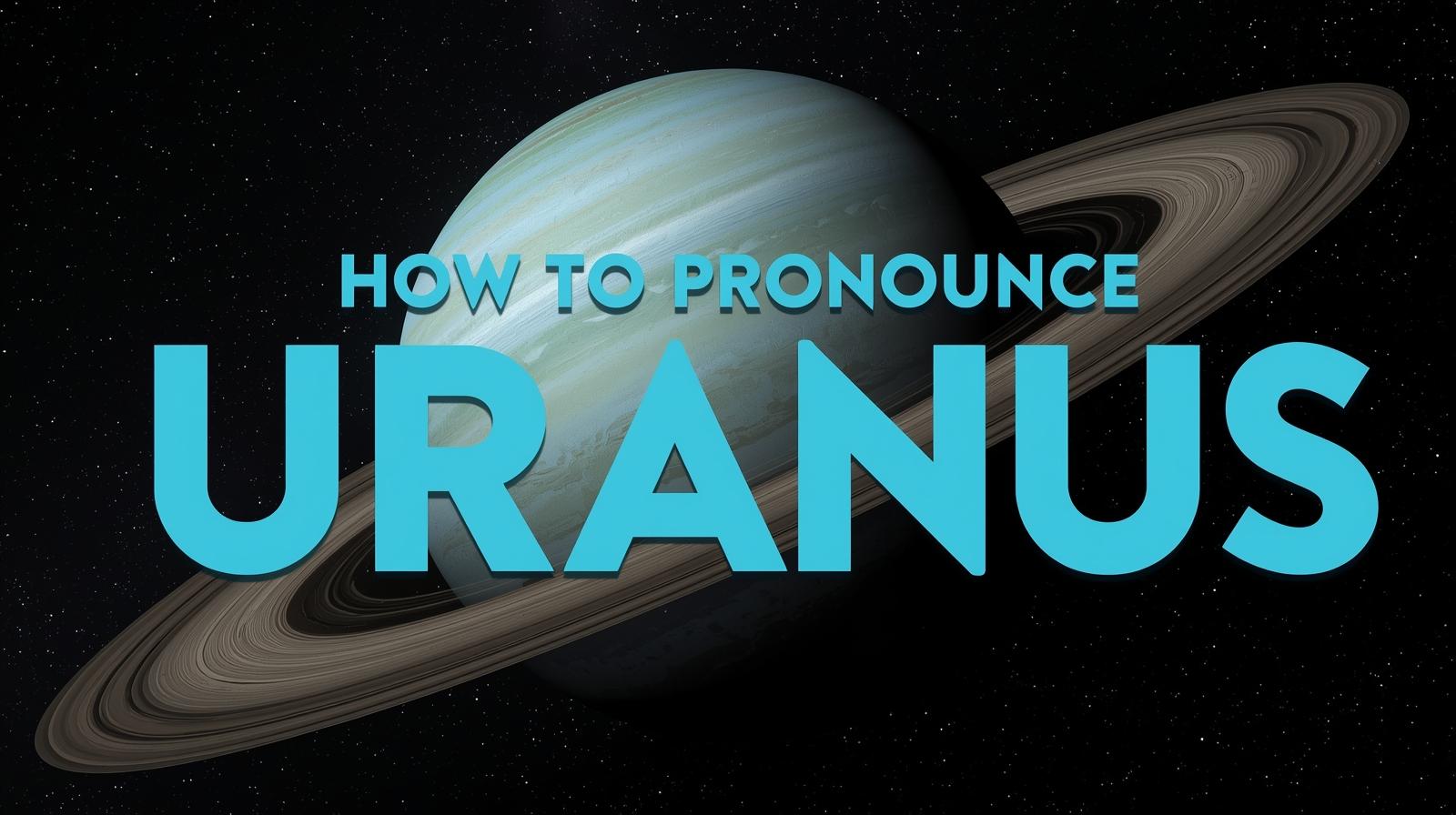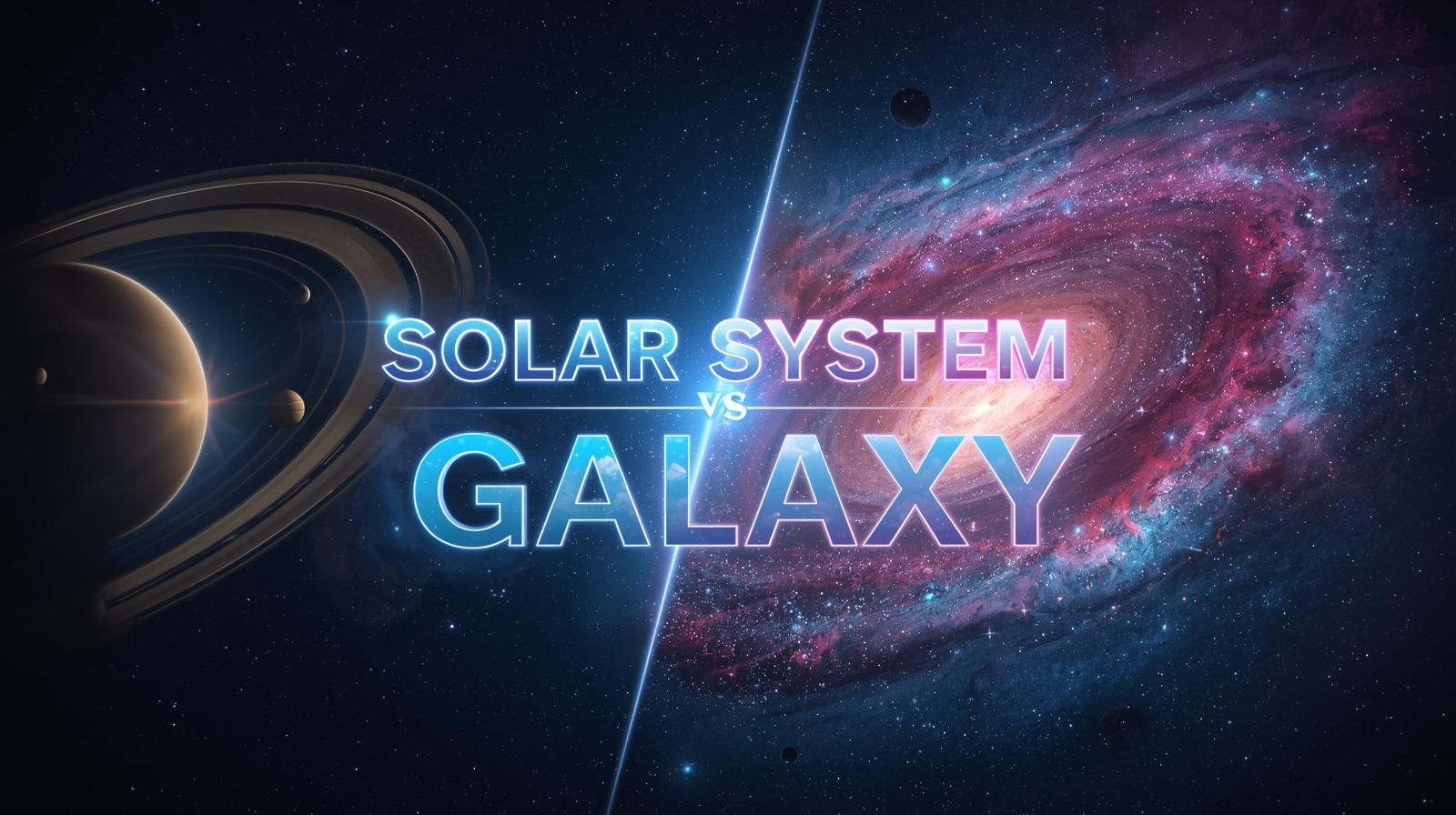The sun vs moon debate has captivated humanity since ancient civilizations first gazed skyward. While both celestial bodies dominate our sky, their differences are staggering. One burns with the fury of 27 million degrees Fahrenheit at its core, while the other reflects borrowed light across a barren, crater-marked surface. But which one truly rules our celestial neighborhood?
I remember standing on my balcony during the 2017 solar eclipse, watching the moon slowly devour the sun. That three-minute totality changed everything I thought I knew about the sun vs moon relationship. The sun vanished, stars appeared at midday, and temperature dropped 15 degrees. It was nature’s most dramatic reminder that these two cosmic giants share an intricate dance that defines life on Earth.
Table of Contents
Understanding the Sun and Moon Basics
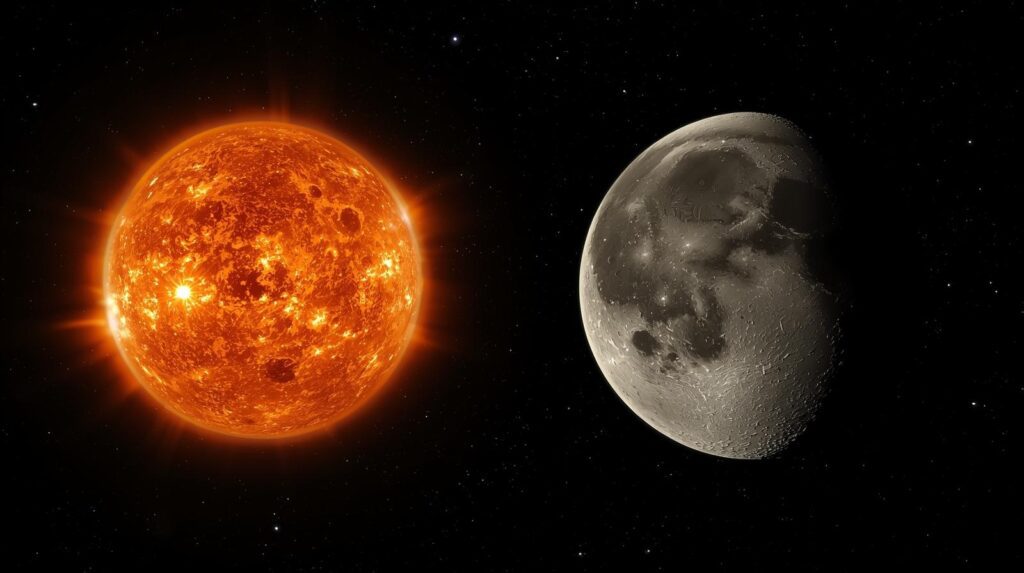
The sun vs moon comparison starts with recognizing their fundamental nature. The sun serves as our solar system’s nuclear furnace, while the moon acts as Earth’s natural satellite and cosmic companion.
What Makes the Sun Special
The sun stands as a 4.5 billion-year-old yellow dwarf star positioned 93 million miles from Earth. This glowing sphere of hydrogen and helium powers all life on our planet through nuclear fusion reactions occurring in its superhot core. The sun’s mass is so immense that it would take more than 330,000 Earths to match its weight, and 1.3 million Earths could fit inside its volume.
The core temperature reaches an astounding 27 million degrees Fahrenheit, where hydrogen atoms fuse into helium, releasing tremendous energy. This energy takes approximately 170,000 years to travel from the core to the surface, bouncing through the radiative zone before reaching the convection zone and finally escaping as sunlight we see daily.
Understanding Earth’s Moon
The moon, Earth’s only natural satellite, orbits our planet at an average distance ranging from 357,000 km to 407,000 km. With a radius of just 1,737 kilometers, the moon measures roughly one-quarter the size of Earth. Unlike the sun, the moon generates no light of its own instead reflecting sunlight across its dusty, crater-filled surface.
Surface temperatures on the moon swing wildly from -290°F during lunar night to +240°F in direct sunlight. This extreme temperature range occurs because the moon lacks an atmosphere to regulate heat, making it inhospitable to life as we know it.
Sun vs Moon: Size and Distance Comparison
| Feature | Sun | Moon |
|---|---|---|
| Diameter | 865,000 miles (1.4 million km) | 2,159 miles (3,474 km) |
| Distance from Earth | 93 million miles (150 million km) | 238,855 miles (384,400 km) |
| Surface Temperature | 10,000°F (5,500°C) | -290°F to +240°F (-179°C to +116°C) |
| Core Temperature | 27 million°F (15 million°C) | Cold (no internal heat source) |
| Mass Comparison | 333,000 Earths | 0.0123 Earths (1/81 of Earth) |
| Age | 4.6 billion years | 4.5 billion years |
The sun vs moon size difference becomes crystal clear when examining these numbers. The sun’s diameter exceeds the moon’s by approximately 400 times. Remarkably, the sun sits roughly 400 times farther from Earth than the moon creating a cosmic coincidence that makes both appear nearly identical in size from our perspective.
How the Sun and Moon Affect Earth
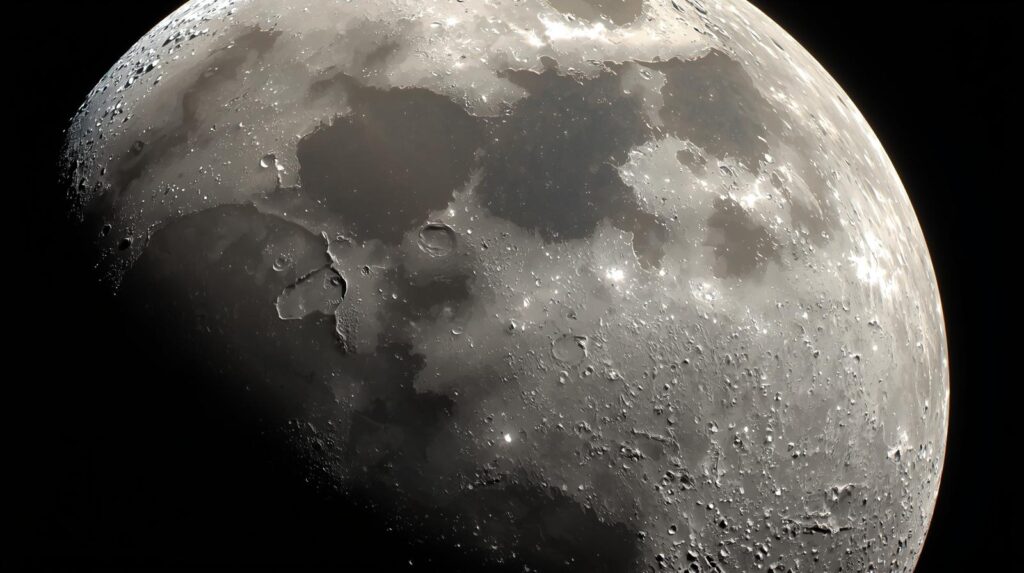
The sun vs moon influence on Earth manifests through dramatically different mechanisms. The sun provides life-sustaining energy, driving photosynthesis, weather patterns, and maintaining temperatures suitable for liquid water. Without the sun’s constant energy output, Earth would freeze into a lifeless ice ball within weeks.
According to NASA, the sun’s radiation delivers approximately 173,000 terawatts of power to Earth continuously more than 10,000 times the total human energy consumption. This solar energy drives ocean currents, generates wind patterns, and powers the water cycle that distributes fresh water across continents.
The moon, meanwhile, orchestrates Earth’s tidal rhythms through gravitational forces. Ocean tides rise and fall based on the moon’s position, affecting coastal ecosystems, navigation, and even human behavior patterns that ancient cultures recognized millennia ago.
Sun vs Moon: Light and Visibility
The sun vs moon visibility difference stems from their light-generation methods. The sun produces light through nuclear fusion, making it the brightest object in our sky. Looking directly at the sun without protection causes permanent eye damage within seconds testament to its incredible luminosity.
The moon merely reflects 3-12% of sunlight hitting its surface, depending on lunar phase and surface composition. Lunar brightness varies dramatically throughout its 29.5-day cycle, from the brilliant full moon to the invisible new moon when its illuminated side faces away from Earth.
During total solar eclipses, the sun vs moon relationship becomes spectacular as the moon’s shadow races across Earth at 1,700 miles per hour. These rare events occur when the moon passes directly between Earth and sun, blocking sunlight completely for up to 7.5 minutes. The next major eclipse visible from North America occurs on August 23, 2044.
The Scientific Battle: Sun vs Moon Exploration
Human exploration reveals another dimension of the sun vs moon comparison. NASA’s Apollo program successfully landed 12 astronauts on the moon between 1969 and 1972, collecting 842 pounds of lunar samples. These missions proved humans could survive the 238,855-mile journey and work on another celestial body.
Conversely, sending humans to the sun remains impossible not just technologically, but physically. Even if spacecraft could somehow survive temperatures exceeding 10,000°F at the surface (and millions of degrees deeper), the intense radiation would prove instantly lethal. Instead, NASA’s Parker Solar Probe, launched in 2018, approaches within 4 million miles of the sun’s surface using revolutionary heat-shield technology.
The sun vs moon exploration comparison highlights humanity’s achievement asymmetry. We’ve walked on the moon but can only observe the sun remotely using specialized instruments aboard space telescopes and probes.
Moon Phases vs Solar Activity Cycles
The sun vs moon relationship extends to their periodic behaviors. The moon completes its phase cycle every 29.5 days, progressing through eight distinct phases: new moon, waxing crescent, first quarter, waxing gibbous, full moon, waning gibbous, third quarter, and waning crescent.
The sun follows an approximately 11-year activity cycle called the solar cycle, during which magnetic poles flip and solar activity fluctuates between minimum and quiet periods to maximum activity featuring frequent solar flares and coronal mass ejections. Solar Cycle 25 began in December 2019, with maximum activity predicted for July 2025.
During solar maximum, increased solar storms can disrupt satellite communications, GPS navigation, power grids, and radio transmissions here on Earth. The legendary Carrington Event of 1859 caused telegraph systems worldwide to spark and catch fire, while auroras appeared as far south as Cuba and Hawaii. A similar event today could cause trillions of dollars in infrastructure damage.
Cultural and Historical Impact
Throughout history, the sun vs moon rivalry has shaped mythology, religion, calendars, and timekeeping. Ancient Egyptians worshipped Ra, the sun god, as their supreme deity. Greeks honored Helios as the sun personification and Selene as the moon goddess. Many cultures developed both solar and lunar calendars, recognizing each celestial body’s unique rhythms.
The Islamic calendar follows lunar months, while most Western calendars blend solar years with lunar month naming conventions. This sun vs moon influence on timekeeping continues today our months roughly correspond to lunar cycles, while years track Earth’s solar orbit.
Farmers historically planted crops according to moon phases, believing lunar gravity affected moisture in soil. While modern science questions some traditional lunar planting claims, tidal influences on coastal agriculture remain measurable and significant.
Which One Matters More?
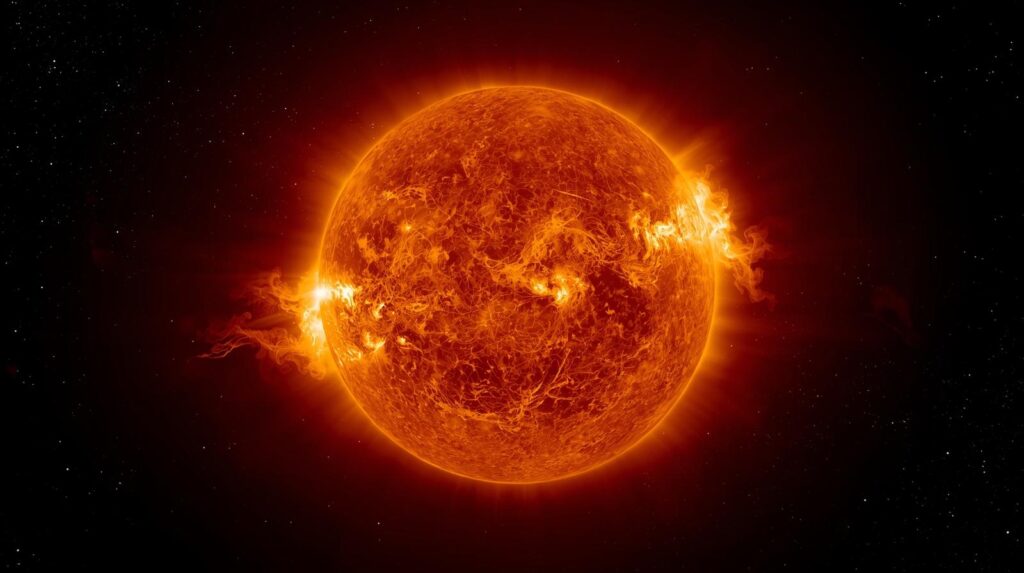
The sun vs moon importance question lacks a simple answer. The sun undeniably provides more direct value without solar energy, Earth would be uninhabitable. Every calorie of food energy, every breath of oxygen from plants, and every weather pattern ultimately traces back to solar radiation.
However, dismissing the moon oversimplifies its significance. The moon stabilizes Earth’s axial tilt at 23.5 degrees, preventing wild climate swings that would make advanced life difficult. Lunar tides may have facilitated the evolution of early life forms transitioning from ocean to land. The moon also slows Earth’s rotation gradually without it, our days would last just 6-8 hours.
The Future of Sun and Moon Studies
Space agencies worldwide continue intensifying sun vs moon research. NASA’s Artemis program aims to establish permanent lunar bases by the 2030s, using the moon as a stepping stone for Mars missions. These bases will extract water ice from permanently shadowed craters, converting it into rocket fuel and drinking water.
Solar research focuses on predicting dangerous space weather events before they impact Earth’s technology infrastructure. Improved forecasting could provide days of warning before major solar storms, allowing utilities to protect power grids and satellite operators to safeguard equipment.
The James Webb Space Telescope and upcoming solar missions will unveil deeper secrets about how our sun compares to billions of other stars across the universe. Meanwhile, lunar geology studies help scientists understand planetary formation throughout the solar system.
Conclusion
The sun vs moon debate reveals two celestial bodies serving complementary yet distinct roles. The sun reigns as our system’s energy source and gravitational anchor, while the moon stabilizes Earth’s environment and orchestrates tidal rhythms. Rather than competitors, they function as cosmic partners enabling life’s existence on our blue planet.
Understanding the sun vs moon relationship deepens our appreciation for the delicate astronomical balance sustaining life. From ancient myths to modern space exploration, humans have recognized both celestial giants’ essential contributions. As technology advances, we’ll continue unraveling mysteries about these familiar yet extraordinary neighbors in our cosmic neighborhood.
Check out Space for more fascinating celestial facts, and explore more cosmic wonders at alldandy.
Frequently Asked Questions
Q1: Why do the sun and moon appear the same size in the sky?
The sun is 400 times larger than the moon but sits approximately 400 times farther from Earth. This remarkable cosmic coincidence makes both appear nearly identical in angular diameter about 0.5 degrees enabling total solar eclipses where the moon perfectly covers the sun.
Q2: Can the moon affect human behavior and health?
Despite popular belief, scientific studies find no reliable evidence that moon phases significantly affect human behavior, sleep patterns, or birth rates. However, the moon’s gravitational pull does measurably influence ocean tides and may subtly affect certain coastal animal behaviors. Does this ancient belief persist because correlation feels more compelling than causation?
Q3: How long will the sun continue burning?
The sun will continue fusing hydrogen for approximately 5 billion more years before exhausting its core fuel. It will then expand into a red giant, possibly engulfing Mercury, Venus, and Earth before collapsing into a white dwarf. The sun has already burned for 4.6 billion years, meaning it’s roughly middle-aged.
Q4: Why does the moon have phases while the sun doesn’t?
The moon produces no light itself we see reflected sunlight from its surface. As the moon orbits Earth, we observe different portions of its illuminated half, creating phases. The sun generates its own light constantly, so it doesn’t have phases. However, its activity level does vary throughout the 11-year solar cycle.
Q5: Is the moon moving away from Earth?
Yes, the moon recedes from Earth at approximately 1.5 inches (3.8 cm) per year due to tidal interactions. In the distant past, the moon sat much closer, appearing larger in the sky and causing more extreme tides. In billions of years, will the moon drift so far that total solar eclipses become impossible?

